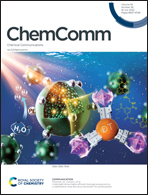Surface and near-surface engineering design of transition metal catalysts for promoting water splitting
Abstract
Transition metal catalysts are widely used in the field of hydrogen production via water electrolysis. The surface state and near-surface environment of the catalysts greatly affect the efficiency of hydrogen production. Therefore, the rational design of surface engineering and near-surface engineering of transition metal catalysts can significantly improve the performance of water electrolysis. This review systematically introduces surface engineering strategies, including heteroatom doping, vacancy engineering, strain regulation, heterojunction effect, and surface reconstruction. These strategies optimize the surface electronic structure of the catalysts, expose more active sites, and promote the formation of highly active species, ultimately enhancing water electrolysis performance. Furthermore, near-surface engineering strategies, such as surface wettability, three-dimensional structure, high-curvature structure, external field assistance, and extra ion addition, are thoroughly discussed. These strategies expedite the mass transfer of reactants and gas products, improve the local chemical environment near the catalyst surface, and contribute toward achieving an industrial-level current density for overall water splitting. Finally, the key challenges faced by surface engineering and near-surface engineering of transition metal catalysts are highlighted and potential solutions are proposed. This review offers essential guidelines for the design and development of efficient transition metal catalysts for water electrolysis.



 Please wait while we load your content...
Please wait while we load your content...